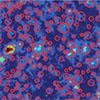Feb 04, 2022 (Nanowerk News) When water boils, it converts into another phase, steam. Such transitions are commonplace in nature and frequently studied in scientific laboratories. One of particular interest to scientists is the transition from a metal to an insulator (MIT), which can occur in some materials at various...
Making metal-halide perovskites useful in planar devices through a new hybrid structure
Feb 04, 2022 (Nanowerk News) Two of the main drawbacks of using tin (Sn)-based metal halide perovskites (MHPs) in thin-film transistors have been simultaneously solved by an innovative hybrid 2D/3D structure proposed by scientists at Tokyo Institute of Technology (Tokyo Tech). Their findings will help unlock the potential of environmentally...
In some metals, there is strength in order
Feb 04, 2022 (Nanowerk News) Metal alloys are materials that contain two or more atomic metal elements. They often have one primary element and smaller amounts of other elements. Scientists recently discovered a new class of alloys that have several elements combined in equal amounts. Researchers call these materials “medium...
Nature’s colors can replace toxic pigments
Feb 04, 2022 (Nanowerk News) Dye pigments are often toxic, so researchers around the world have long been looking for effective ways to make non-toxic, recyclable and sustainable colors instead. The answer lies in nanotechnology and nature’s own methods. Dyes that humans make often contain substances that are harmful to...
Discovery unravels how atomic vibrations emerge in nanomaterials
Feb 04, 2022 (Nanowerk News) A hundred years of physics tells us that collective atomic vibrations, called phonons, can behave like particles or waves. When they hit an interface between two materials, they can bounce off like a tennis ball. If the materials are thin and repeating, as in a...
Making designer crystals? It’s easier with a new targeted particle bonding strategy
Feb 04, 2022 (Nanowerk News) Colloids are microparticles in a solution, meaning the particles are evenly distributed. Crystals made from colloids are valuable in a wide range of applications such as batteries, fuel cells, sensors, solar cells, and catalysts. Scientists have sought ways to assemble these crystals into larger structures...
Too many disk galaxies than theory allows
Feb 04, 2022 (Nanowerk News) The Standard Model of Cosmology describes how the universe came into being according to the view of most physicists. Researchers at the University of Bonn have now studied the evolution of galaxies within this model, finding considerable discrepancies with actual observations. The University of St....
With a little help, new optical material assembles itself
Feb 04, 2022 (Nanowerk News) A research team led by Lawrence Berkeley National Laboratory (Berkeley Lab) has demonstrated tiny concentric nanocircles that self-assemble into an optical material with precision and efficiency. Their work overcomes a longstanding problem in nanoscience – molecular impurities. Illustration of small organic molecules, block copolymer-based supramolecules,...
Researchers report hyper-efficient method for removing carbon dioxide from air
Feb 04, 2022 (Nanowerk News) University of Delaware engineers have demonstrated a way to effectively capture 99% of carbon dioxide from air using a novel electrochemical system powered by hydrogen. It is a significant advance for carbon dioxide capture and could bring more environmentally friendly fuel cells closer to market....
Puffy planets lose atmospheres, become super Earths
Feb 04, 2022 (Nanowerk News) Exoplanets come in shapes and sizes that are not found in our solar system. These include small gaseous planets called mini-Neptunes and rocky planets several times Earth's mass called super-Earths. Now, astronomers have identified two different cases of "mini-Neptune" planets that are losing their puffy...










